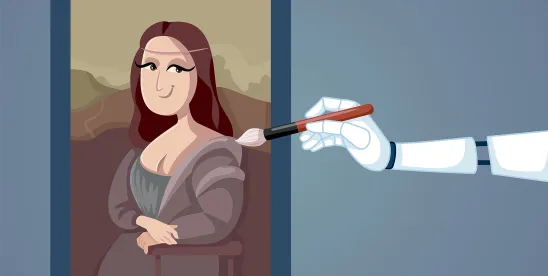On February 10, 2025, the Hangzhou Internet Court announced that an unnamed defendant’s generative artificial intelligence’s (AI) generating of images constituted contributory infringement of information network dissemination rights, and ordered the defendant to immediately stop the infringement and compensate for economic losses and reasonable expenses of 30,000 RMB.


The defendant operates an AI platform that provides Low-Rank Adaptation (LoRA) models, and supports many functions such as image generation and model online training. On the homepage of the platform and under “Recommendations” and “IP Works”, there are AI-generated pictures and LoRA models related to Ultraman, which can be applied, downloaded, published or shared. The Ultraman LoRA model was generated by users uploading Ultraman pictures, selecting the platform basic model, and adjusting parameters for training. Afterwards, other users could then input prompts, select the base model, and overlay the Ultraman LoRA model to generate images that closely resembled the Ultraman character.
The unnamed plaintiff (presumably Tsuburaya Productions) alleged that the defendant infringed on their information network dissemination rights by placing infringing images and models on the information network after training with input images. The defendant used generative AI technology to train the Ultraman LoRA model and generate infringing images, constituting unfair competition. The plaintiff demanded the defendant cease the infringement and compensate for economic damages of 300,000 RMB.
The defendant countered that their AI platform, by calling third-party open-source model code, integrates and deploys these models according to platform needs, offering a generative AI platform for users. However, the platform does not provide training data and only allows users to upload images to train the model, which falls within the “safe harbor” rule for platforms and does not constitute infringement.
The Court reasoned:
On the one hand, if the generative artificial intelligence platform directly implements actions protected by copyright, it may constitute direct infringement. However, in this case, there is no evidence to prove that the defendant and the user jointly provided infringing works, and the defendant did not directly implement actions protected by information network dissemination rights.
On the other hand, in this case, when the user inputs infringing images and other training materials and decides whether to generate and publish them, the defendant does not necessarily have an obligation to conduct prior review of the training images input by the user and the dissemination of the generated products. Only when it is at fault for the specific infringing behavior can it constitute aiding and abetting infringement.
Specifically, the following aspects are considered comprehensively:
First, the nature and profit model of generative AI services. The open source ecosystem is an important part of the AI industry, and the open source model provides a general basic algorithm. As a service provider directly facing end users at the application layer, the defendant has made targeted modifications and improvements based on the open source model in combination with specific application scenarios, and provided solutions and results that directly meet the use needs. Compared with the provider of the open source model, it directly participates in commercial practices and benefits from the content generated based on the targeted generation. From the perspective of service type, business logic and prevention cost, it should maintain sufficient understanding of the content in the specific application scenario and bear the corresponding duty of care. In addition, the defendant obtains income through users’ membership fees, and sets up incentives to encourage users to publish training models, etc. It can be considered that the defendant directly obtains economic benefits from the creative services provided by the platform.
Secondly, the popularity of the copyrighted work and the obviousness of the alleged infringement. Ultraman works are quite well-known. When browsing the platform homepage and specific categories, there are multiple infringing pictures, and the LoRA model cover or sample picture directly displays the infringing pictures, which is relatively obvious infringement.
Thirdly, the infringement consequences that generative AI may cause. Generally speaking, the results of user behavior using generative AI are not identifiable or intervenable, and the generated images are also random. However, in this case, because the Ultraman LoRA model is used, the characteristics of the character image can be stably output. At this time, the platform has enhanced the identifiability and intervention of the results of user behavior. And because of the convenience of technology, the pictures and LoRA models generated and published by users can be repeatedly used by other users. The trend of causing the spread of infringement consequences is already quite obvious, and the defendant should have foreseen the possibility of infringement.
Finally, whether reasonable measures have been taken to prevent infringement. The defendant stated in the platform user service agreement that it would not review the content uploaded and published by users. After receiving the lawsuit notice, it has taken measures such as blocking relevant content and conducting intellectual property review in the background, proving that it has the ability to take but has failed to take necessary measures to prevent infringement that are consistent with the technical level at the time of the infringement.
In summary, the defendant should have known that network users used its services to infringe upon the right of information network dissemination but did not take necessary prevention measures. It failed to fulfill his duty of reasonable care and was subjectively at fault, constituting aiding and abetting infringement.
Violations of the Anti-Unfair Competition Law did not need to be considered as copyright infringement was determined.
The full text of the announcement is available here (Chinese only).



 />i
/>i
